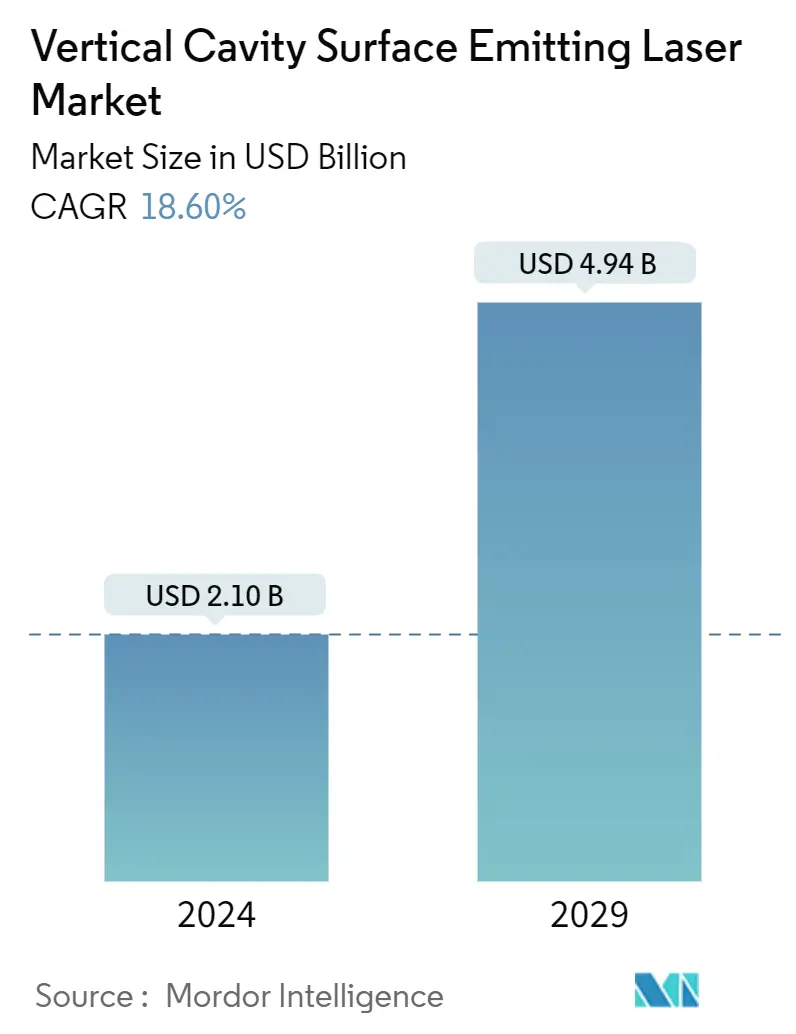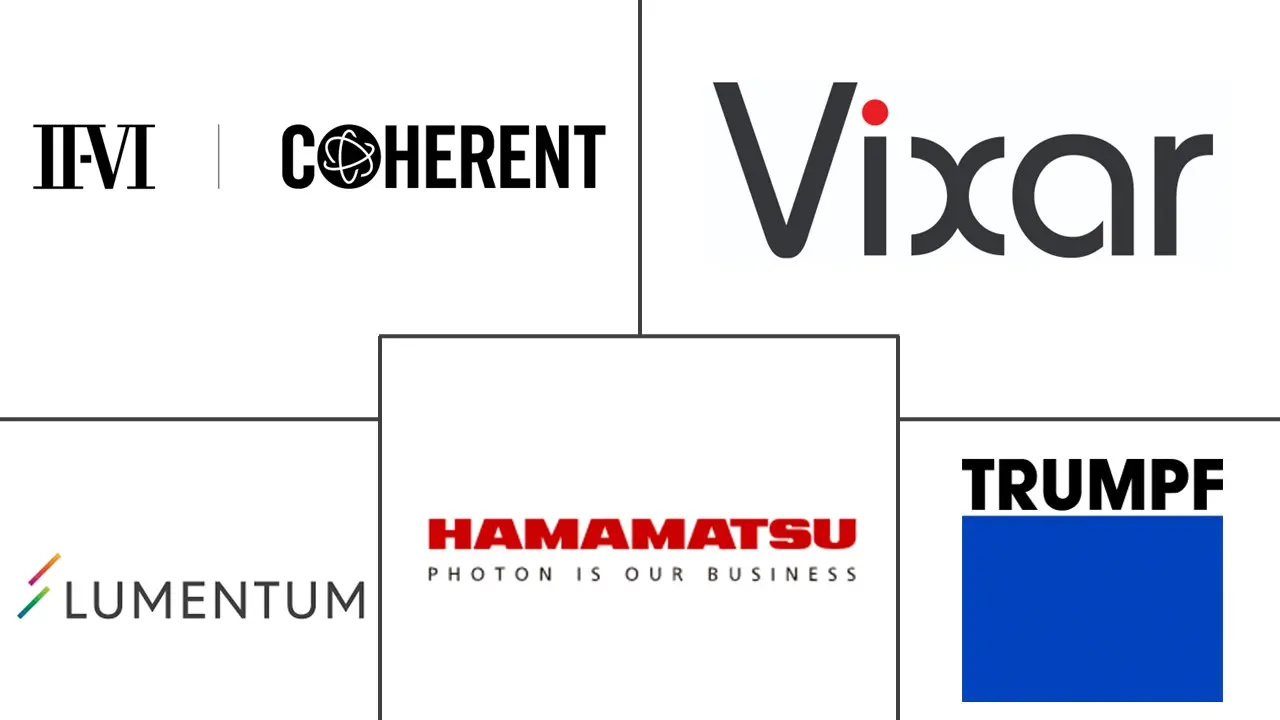Market Size of Vertical Cavity Surface Emitting Laser Industry

| Study Period | 2019-2029 |
| Market Size (2024) | USD 2.10 Billion |
| Market Size (2029) | USD 4.94 Billion |
| CAGR (2024 - 2029) | 18.60 % |
| Fastest Growing Market | Asia Pacific |
| Largest Market | Asia Pacific |
Major Players
*Disclaimer: Major Players sorted in no particular order |
Need a report that reflects how COVID-19 has impacted this market and its growth?
Vertical Cavity Surface Emitting Laser Market Analysis
The Vertical Cavity Surface Emitting Laser Market size is estimated at USD 2.10 billion in 2024, and is expected to reach USD 4.94 billion by 2029, growing at a CAGR of 18.60% during the forecast period (2024-2029).
The vertical-cavity surface-emitting laser (VCSEL) is a semiconductor whose laser is emitted perpendicular to the top surface. It differs from an edge-fired laser, which emits the laser from the edge. VCSELs offer precision, high efficiency, reliability, and high speed with a cost-effective solution, and these are the most promising new technological developments in laser physics. VCSELs offer various advantages, such as lower power consumption, beam quality, modulation speeds, and manufacturing costs.
- The VCSEL market is anticipated to witness robust growth during the forecast period owing to several factors like increasing requirements for transmitting data over long distances with high speed and efficiency, rising demand for these lasers in automotive LiDAR applications, and industrial applications. In August 2023, Innoviz Technologies and the BMW Group are expanding their collaboration by starting a B-sample development phase on a new generation of LiDAR.
- Over the past few years, optical interconnect infrastructures in the data centers have advanced to the next-generation 400 Gbit/s data rate from 100 Gbit/s. This is primarily driven by the ever-increasing data traffic in data centers due to the rapid market growth of emerging technologies, such as AI, VR/AR, and the Internet of Things (IoT), and the introduction of 5G mobile network systems.
- The increasing adoption of VCSELs in smartphones by smartphone manufacturers for 3D sensing or proximity sensing applications is one of the primary factors driving the market growth. The growth of 3D sensing was propelled by the introduction of face ID modules in iPhones. Since then, there have been significant developments in 3D sensing. Slowly, there was a transition of 3D sensing from front-side face ID modules to the rear side for photography applications.
- InP-based VCSELs are typically preferred for applications such as optical communication due to their low dispersion and low fiber loss. However, InP-based VSCELs cannot provide large Δn DBR mirrors, owing to the high reflectivity and low penetration depth. The effective cavity length limits the tuning range and the confinement factor.
- The COVID-19 pandemic had a remarkable impact on the market studied, with several end-user industries that deploy VCSEL facing several difficulties. The industries were stuck with nationwide lockdowns, which brought them to a standstill, but after Q2 of 2020, they gradually started their operation. Since the raw materials are bought in China, the sourcing has been affected by the tariffs imposed by the United States.
- Geopolitical tensions and conflicts worldwide drive the demand for military spending. According to the Stockholm International Peace Research Institute (SIPRI), the United States led the ranking of countries with the highest military expenditure in 2022, with USD 877 billion dedicated to the military. That constituted nearly 40 percent of the total military spending worldwide that year, which amounted to USD 2.2 trillion. This amounted to 3.5 percent of the US gross domestic product.
